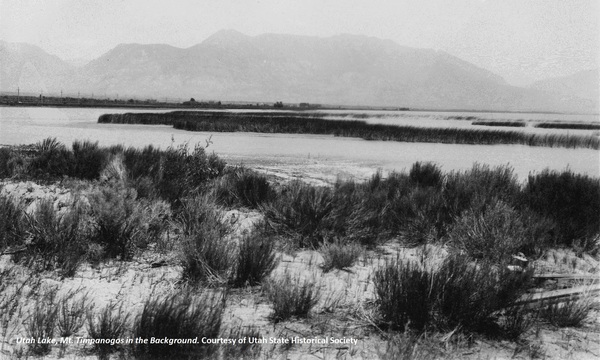Dublin Core
Title
Description
We no longer work as close to the land as Utah’s indigenous people once did. But that doesn’t mean we don’t work for the same reasons. Learn how Timpanogos Utes made a living and how we might relate.
We sometimes forget how much work was – and still is – determined by the way we get food. In the nineteenth century, the Timpanogos Utes who lived at Utah Lake worked more to maintain subsistence than they did to accumulate wealth. They survived by managing nature, adapting to changes in their environment, and providing food and clothing for their families. That is not to say that they were poor – being free of too many possessions made for its own sense of wealth. And it is not to say that there wasn’t work to be done – because managing nature’s yield was no easy task.
The Timpanogos Utes were semi-sedentary, ranging over their lands in the “incessant quest for food.” Those who fished the mouth of Provo River stayed put when the water teamed with trout and pulled up stakes when it did not. Fish accounted for almost thirty percent of their diet and required a lot of work. They wove nets of squawbush and weirs from willow to fish Utah Lake. They felled arrows and strung bows to shoot trout midstream. They dried fish, and buried them to store for winter.
When the trout were less plentiful, the Utes retreated into the mountains in search of elderberries or serviceberries, and deer or elk, performing a kind of labor that today’s recreational hikers and hunters might appreciate. At times, the Utes relied on insects to supplement their diet. They burned brush to gather and scorch grasshoppers before pounding the carcasses with lard and fruit into a sort of protein bar.
Much of this work may seem unfamiliar to us today. Modern agribusiness keeps most of us from making a living so close to the land. But, just as the Utes’ primary reason for work was to get food “from the earth and into bellies,” our primary reason for work is to feed and clothe our families. And that should seem familiar enough.
Creator
Source
Image: Jordan River flowing from Utah Lake. Mt. Timpanogos is in the background. No Date. Courtesy of Utah State Historical Society.
_______________
See Jared Farmer, On Zion’s Mount: Mormons, Indians, and the American Landscape (Cambridge: Harvard University Press, 2010); Floyd O’Neil, “The Utes, Southern Paiutes, and Gosiutes” in Helen Z. Papanikolas, ed., The Peoples of Utah (Salt Lake City: Utah State Historical Society, 1976); Donald Worster, “Transformations of the Earth: Toward an Agroecological Perspective in History,” The Journal of American History, vol. 76, issue 4 (March 1990); Forrest Cuch, ed., A History of Utah’s American Indians, (Salt Lake City: Utah Division of Indian Affairs, 1996).

